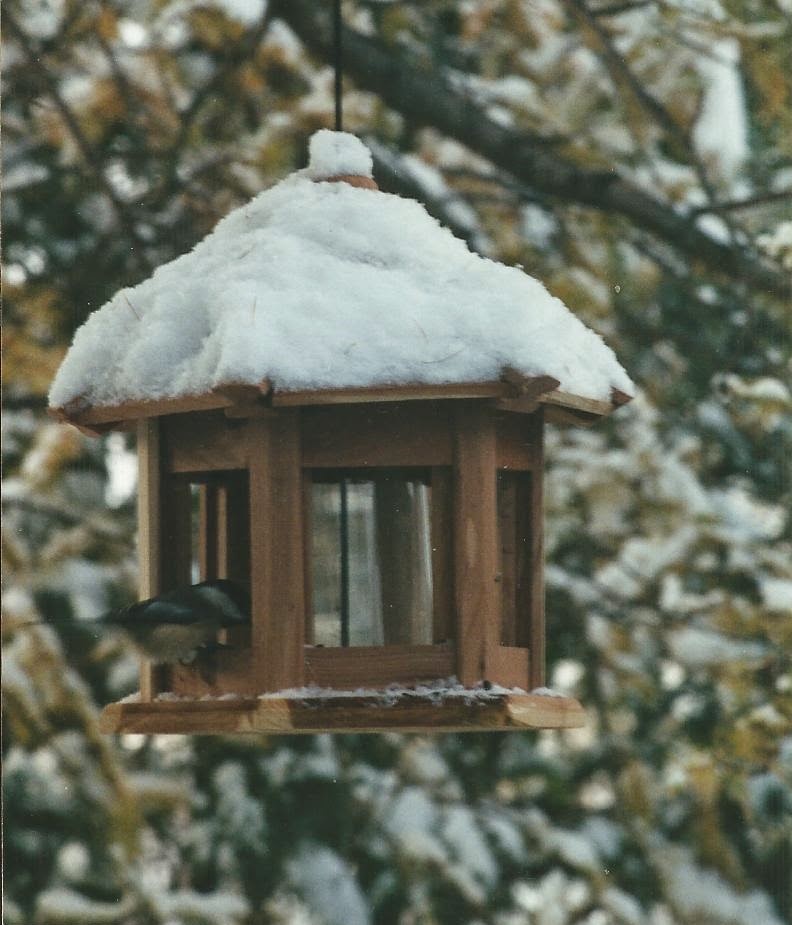Goldfinches are eating the Swiss chard at this time of the
growing season. When I initially noticed
holes in my Swiss chard, I thought I had an insect problem. ‘Strange’, I thought, ‘insects generally
attack the tender under growth of plants, the new shoots’, but here the tops of
the tallest, hardiest leaves of the Swiss chard had been perforated. I no sooner sat back on my little garden
bench after a bit of weeding and I heard the lovely little signature call so
beloved by bird watchers and then he alighted.
A male Goldfinch took up a perch on the crest of a large leaf vein and began
working a pattern in the foliage of the Swiss chard. Soon another male Goldfinch came and then
there were several, all males and the contrast of their brilliant yellow
plumage against the back drop of the dark green Swiss chard stirred excitement buried
deep within the birder’s psyche.
Discovering a behavior that had perhaps not been known about a species
is gratifying. It makes the bird watcher
feel more akin to the species.
Chard is a wonderful vegetable and there are many varieties. I prefer the hardy Fordhook but I have also
grown Kaleidoscope and Rhubarb varieties of Swiss Chard which are as the names
imply, very colourful and attractive enough to tuck away in the flower garden
if space is in short supply.
Chard is highly nutritious and though there is a Kale craze going on
at this time, I suspect that Swiss chard will eventually topple Kale’s crown
for the title of “super green”. In
terms of health giving properties chard is up there with Watercress.
It would seem that goldfinches instinctively know where to find
nutritious fare. I grow a row of kale
beside the Swiss chard but the birds do not partake of the kale. Perhaps the leaves are not tender enough or
perhaps there is too much of a pungent flavor to Kale while Swiss chard is mellow. I personally think Swiss chard as a vegetable,
surpasses even spinach in flavor.
My vegetable garden and my flower garden are hard won, carved out of a
much overgrown plot through which the rugged path meanders. The soil is clay and I must constantly infuse
it with additives to improve the health and texture of the ground as a planting
medium.
Why I am driven to keep planting when others would realize the
futility, I cannot say, but cultivating the earth is a passion. I cannot abandon my love of gardening despite
the rugged path which must be honed to maintain it and besides, the Gold
finches are depending on the Swiss Chard for some mid summer sustenance.







